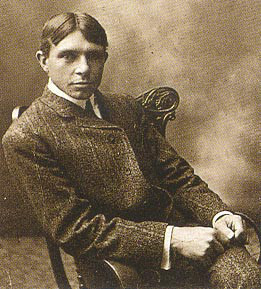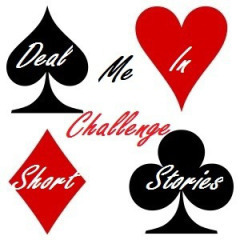Katherine Nabity's Blog, page 210
May 13, 2014
Short Review ~ In Reckless Ecstasy
Nevertheless there are thoughts beyond the reach of words and these the seers transmit only by lurid splashes of verbiage that cannot be gauged by common sense but must be sought out by the spirit of sublimity in us. I try to express myself sensibly but if that fails I will use the reckless ecstasy. ~ Carl Sandburg
I had a yen to read more Sandburg and decided to start at the beginning. In Reckless Ecstasy was Sandburg’s first published collection. It’s a bit of poetry and a bit of prose, as you can see from above. While the use of language that I’m used to from Sandburg is there, this is definitely the work of a younger man. It is most often a proclamation of philosophy with all the enthusiasm and exuberance of a 26 year-old idealist. What I did miss was the more concrete aspects of Smoke and Steel and Slabs of the Sunburnt West, the connection to the land and cities that I spoke to me in those collections.
Publication date: 1904 by Asgard Press


May 10, 2014
Deal Me In, Week 19 ~ “Dealing with the Devil”
Hosted by Jay @ Bibliophilopolis
“Dealing with the Devil” by Robert Weinberg
Card picked: Four of Spades
From: David Copperfield’s Tales of the Impossible
Review: I can’t sum it up better than David Copperfield in his intro: “Robert Weinberg pits a priest with a carny background against a dead card shark who exists in the real world courtesy of his deal with the devil.” He had me at “priest with a carny background.” Unfortunately, after a couple weeks of Millhauser, I was left a little dissatisfied with the level of detail in this story when it came to poker-playing and card-sharpery. I may also be hyper aware of a certain level of hand-wavery since I’ve spent some time trying to write a decent blackjack scene (which was ultimately replaced by a roulette scene).
Overall, though, “Dealing with the Devil” is enjoyable, not challenging, and a bit predictable. Basically, it was perfectly suited to a Saturday afternoon after a trying week.
About the Author: I’m generally familiar with Robert Weinberg as an anthologist, notably the fun 100 Little series of horror and mystery stories.


May 8, 2014
Bout of Books 10

The Bout of Books read-a-thon is organized by Amanda @ On a Book Bender and Kelly @ Reading the Paranormal. It is a week long read-a-thon that begins 12:01am Monday, May 12th and runs through Sunday, May 18th in whatever time zone you are in. Bout of Books is low-pressure, and the only reading competition is between you and your usual number of books read in a week. There are challenges, giveaways, and a grand prize, but all of these are completely optional. For all Bout of Books 10 information and updates, be sure to visit the Bout of Books blog. - From the Bout of Books team
Goals
I haven’t been doing well with readathons this year, but I couldn’t stand letting a Bout of Books go by without me. In fact, I’m kind of planning for this Bout of Books to be a watershed. After May and the group of books below, I’m going to take a break from readathons and from reading ARCs. I have so many unread books on my shelves that I’m not sure why I seek out so many others to read instead. I’ll still keep an eye on NetGalley, but it’s time to be even pickier about what I request. I won’t finish all these books during Bout of Books, but they are my immediate reading list.
Books




In progress as of 5/8/14 (I’ll update before reading on Monday):
The Best Horror of the Year, Vol. 6: pg. 195/395
Sundance: pg. 24/336
Plus a couple of chapters of A Feast for Crows and a short story for Deal Me In.


May 6, 2014
Review ~ Briar Rose
It is an old, old tale, the German story of Briar Rose, the Sleeping Beauty. Now one of America’s most celebrated writers tells it afresh, set this time in the forests patrolled by the German army during World War II. A tale of castles, of mists and thorns, of a beautiful sleeping princess, and an astonishing revelation of death and rebirth. (via Goodreads)
This is a book I’ve owned for a very long time. I bought it when it was newly published, back when I was in college. Twenty years is a good estimate. It’s traveled back and forth from dorm rooms to my parent’s house to the house I shared one summer to the apartments I lived in before I got married to the apartment I’ve lived in for the last 14 years. What took me so long? Books about the Holocaust are like that. You can’t wait to be in the right mood for them. The mood never comes.
Becca and her two sisters grew up with their Gemma’s version of Sleeping Beauty. It mostly followed the usual tale, but with some curious differences. Even Becca, the good granddaughter, never paid attention to the inaccuracies until Gemma dies and leaves Becca a box of strange documents concerning a woman named Gitl Mandlestein, not a name familiar to Gemma’s family. Becca unravels the tale, following her grandmother’s story to an extermination camp named Chelmno.
I bought this book because I was intrigued by the combining of fairy tale and history. Gemma’s story, repeating it again and again to her daughter and granddaughters is the distillation of “never forget,” even if there are part of her history that Gemma can’t quite remember. On a personal level, after the death of my own closest grandmother, it was a tough read and once again I wish I knew more solid details about Oma’s life.
This book was one the first that I encountered that was labeled “Young Adult.” When I bought it, that’s just what I was. It very much fits the criteria I consider YA. Becca isn’t only looking for her grandmother’s identity, but her own as well. Sometimes the writing was a little clunky. I haven’t read much Yolen so I’m not sure if it’s her, or whether she was trying to be lighter with the vocabulary.
Publisher: Tor Books
Publication date: November 15th 1993
Genre: Fantasy, Fairy Tale
Why did I choose this book? Decided to finally read it for Once Upon a Time Challenge.


May 5, 2014
Spring into Horror Wrap-Up and Mini-Reviews
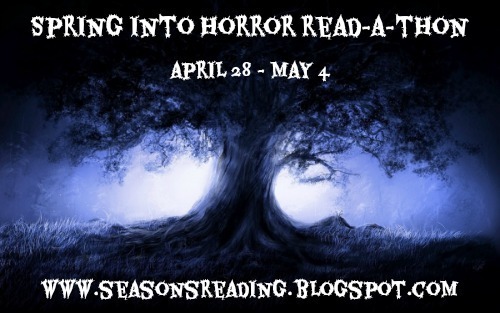
Hosted by Michelle @ Seasons of Reading
Wrap-Up
Never got into a good reading groove last week. Maybe it was starting out with a DNF, maybe it was trying to push through an anthology, maybe it was starting a new writing project. I don’t know. I bounced from book to book; nothing ever sat particularly well with me. Read 359 pages, about twice as many as I might have read otherwise.
Mini-Reviews
First a mention: I read part of Pandemonium: Further Explorations into the World of Clive Barker. It consisted mostly of interviews with Barker, an author I’ve read a little of and know even less about. The timing of the book puts it after Nightbreed came out. Nightbreed is a movie that everyone wishes was better than it is and Barker alludes to his dissatisfaction.
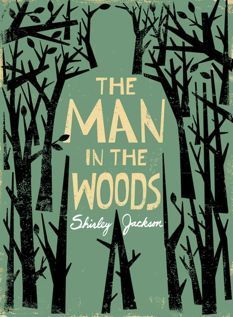 Mini-Review: “The Man in the Woods” by Shirley Jackson
Mini-Review: “The Man in the Woods” by Shirley Jackson
A week ago, The New Yorker magazine printed a previously unpublished story by Shirley Jackson. “The Man in the Woods” is unsettling. Jackson always presents a world that is askew of our own. Her stories *could* be, but we hope they aren’t. This story has a fairy tale tinge to it. The action takes place in a house in the woods, and our main character Christopher is a student who decided to wander rather than study. He is strangely afraid when confronted with books of history shown to him by the inhabitants of the house. That fear of knowledge struck me as the most interesting aspect of the story.
Mini-Review: Abracadanger by Tracey West
While wandering the shelves, both physical and virtual, trying to find a book to amuse me, I ended up doing a horror/magic search at Open Library. Abracadanger caught my attention by being a choose-your-own-adventure, a style of book that I enjoyed in my youth. This one was fun, filled with giant rabbits, mad scientists, and the ghost of Dr. Presto. My only beef with it is that, while obviously written for a fairly young audience, the writing itself could have been better.


May 4, 2014
Deal Me In, Week 18 ~ “The Barnum Museum”
Hosted by Jay @ Bibliophilopolis
“The Barnum Museum” by Steven Millhauser
Card picked: Two of Diamonds
From: The Barnum Museum
Review:
Less of a story and more of a detailed description of a Barnum Museum that doesn’t quite exist and the people who are drawn to it.

Not what we’re talking about. (Image by GK tramrunner on en.wikipedia)
In reality there are two Barnum Museums. If you google Barnum Museum, the primary result is a beautiful building in Connecticut that P. T. Barnum had built to house the Bridgeport Scientific Society and the Fairfield County Historical Society. Unfortunately, the societies didn’t survive financially. The building was closed in 1943 and reopened in the 1960s as a museum to Barnum the man.
The Barnum museum that Millhauser is alluding to is Barnum’s American Museum. Built in 1841 in New York City, it housed attractions both educational and sensational. The five story museum displayed both the Fiji mermaid and had an aquarium big enough to house a white whale. Chang and Eng were on “display” a room away from historical dioramas. There was a lavish theater where performers of every type put on their acts. It was criticized by the morally upstanding for its spectacle. It was immensely popular with everyone else. It dramatically burnt to the ground in 1865.
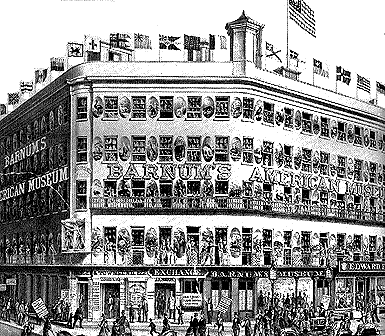
This is more like it.
Millhauser’s story is kind of a mashup of these two museums. His Barnum Museum still stands and architecturally has some of the attributes of the Connecticut museum, except in greater quantity and more fantastical. The displays, or rather inhabitants, are more mythical too. Three mermaids in a pool, a griffin in a cage, and a man with a flying carpet are among the detailed recitation of attractions. Steven Millhauser is joining Bret Easton Ellis in the pantheon of authors who can bring an enormous amount of detail to bear. The controversy surrounding Millhauser’s Barnum Museum is not whether it’s morally questionable to gawk at bare-breasted mermaids, but rather, if such mermaids are real as they seem to be, would such wonderment make the world outside the museum meaningless? And if they’re fake, are they still not wonderful due to the amount of effort that goes into such deception? (I’d say that the answer to that second question is a test as to whether a person appreciates or hates knowing the secrets behind magic tricks.)
Millhauser does give us one named character, but we only spend a few hundred words with her. Hannah is shy, mousy, and intelligent, and she becomes a frequenter of the museum. Like others, she seems to be seeking knowledge from the fantastical, or the lies behind it all.


May 2, 2014
What Else in April
April. April, April, April. I can’t decide if April flew by or has been one of the longest months ever.
Writing Work
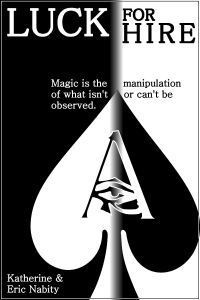 The biggest thing on the work front was the release of Luck for Hire via KDP Select. With previous novels, we’d used Smashwords to engender some inclusiveness across formats, but we decided we wanted to give Amazon’s promo tools a spin. So far, well, we’re still collecting data. It’s a big internet, and there are lots of books out there. I now understand some of the annoying things that writers (esp. self-pub writers) do. It’s easy to get a little desperate and manic about download numbers and high-starred reviews. Currently, Luck‘s only review is from my mom. I’d love for that to change. (*hint, hint* to any of you 1000 odd downloaders. ;) )
The biggest thing on the work front was the release of Luck for Hire via KDP Select. With previous novels, we’d used Smashwords to engender some inclusiveness across formats, but we decided we wanted to give Amazon’s promo tools a spin. So far, well, we’re still collecting data. It’s a big internet, and there are lots of books out there. I now understand some of the annoying things that writers (esp. self-pub writers) do. It’s easy to get a little desperate and manic about download numbers and high-starred reviews. Currently, Luck‘s only review is from my mom. I’d love for that to change. (*hint, hint* to any of you 1000 odd downloaders. ;) )
We also formatted Luck for Hire for release in physical form via CreateSpace. The first proof looked pretty good, but needed some tweaking. We’re currently awaiting the second “proof.” So confident are we in our formatting skills that I’ve already approved the second version and ordered a copy.
April was tax month, which meant some new level of organization concerning payments and expenses. One of the things I’ve been resistant to, concerning self-publishing, has been the running-a-business part. That has become a reality, so I guess it’s time to figure out how to do it to the best of our abilities.
I gave Physic a read-through and preliminary format. Eric’s currently doing another edit/rewriting pass on it.
There was much discussion as to what my next project should be. After further consideration, we decided that Pas de Chat would require a lot of work to whip into shape. It currently has “drawer novel” status. The three options were a second Luck book, a Model Species sequel, or the Abbott novel. My allegiance was firmly with Abbott, but honestly, the plot wasn’t going anywhere. Model Species and the Weordan books as a whole are somewhat unproven at this point. They’re not an easy sell and putting an egg in that basket didn’t seem to make much sense, even though we already have a rough draft of Fuel Eaters. That left Luck. After some cajoling, Eric talked me into it, or rather I got the idea of adding a down-on-her-luck Las Vegas magician to the mix, which makes me a little more excited. I’ve been working on In Need of Luck since Monday. (Since then, Eric has broken the Abbott story open in an interesting way. Maybe that novel will get written in the next year or so after all.)
Other Life Stuff
There was other life stuff? Some disc was played. Spring League finals were last weekend. My team was middling. We won one and lost one on Saturday. I managed pretty well aside from an unfortunate collision with one of my teammates. It was terribly windy and we were playing a zone defense that was a bit chaotic. Eric’s team made it to finals again. Anyway, below is the obligatory ulti picture from the season (courtesy Stephen So). Very similar to the one I posted a few months ago, but with a better skirt and Katie in awesome leggings.



May 1, 2014
Thoughtful Thursday: Book Covers
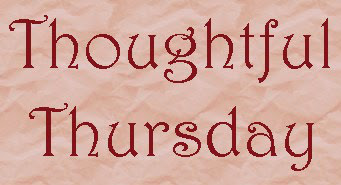
Hosted by Pamela @ Reading is Fun Again
This Thursday’s question:
What features do you like in a book cover? Do you like plain covers? Do you like covers with drawings on them? Do you like covers with photographs on them? Do you like movie-tie in covers?

Who *are* these people? Were they in this novel?
Considering how many conversations I’ve had with my husband about the art for our novels, I have to admit that I don’t really have any strong feelings about book covers. I *will* make some judgements about a book based on the cover, but it’s not a function of whether I like the cover or not. For example, I’m as much of a fan of pretty Victorian dresses as the next girl, but I know many of those books are not the right fit for me.
Once I start reading a book, I don’t pay much attention to the cover. People on the cover, whether drawings or photos, don’t affect me at all, possibly because I’m a little face blind. Generally, I don’t hold a concrete picture of characters in my mind, so it doesn’t matter if the cover matches the text. I remember finishing one of the Wheel of Time books and then looking at the cover and thinking, who are these people?

 From a simply aesthetic point of view, I prefer iconography, lower key art, and maybe the use of matte versus gloss. Those things will attract my attention. House of Leaves is a prime example. In the book store this is a matte black cover with the maze in black gloss. Sparse, but intriguing. I’m also a fan of the subtle or hidden image. I had was on the last story of Koji Suzuki’s Dark Water before I saw the face.
From a simply aesthetic point of view, I prefer iconography, lower key art, and maybe the use of matte versus gloss. Those things will attract my attention. House of Leaves is a prime example. In the book store this is a matte black cover with the maze in black gloss. Sparse, but intriguing. I’m also a fan of the subtle or hidden image. I had was on the last story of Koji Suzuki’s Dark Water before I saw the face.


DNF ~ Glorious
This book was provided to me by the Penguin Group via their First to Read program in exchange for an honest review.
Glorious: A Novel of the American West by Jeff Guinn
Cash McLendon has always had an instinct for self-preservation, one that was honed by an impoverished childhood and life with an alcoholic father barely scraping by on the streets of Saint Louis in 1872. He’s always had a knack for finding and capitalizing on the slightest opportunities, choosing the path of financial security over happiness or real friends. He eventually builds himself up from a Saint Louis street urchin to the son-in-law and heir apparent to industrial mogul Rupert Douglass. Though it lacks passion, his life seems securely set: a wife, a career, property, standing.
But when tragedy strikes, all of his plans and his entire future dissolve in an instant. McLendon’s instinct for survival kicks in; he flees Saint Louis, and Douglas assigns his enforcer, an ominous skull-cracker with steel-toed boots, to track him down.
With nothing to lose, McLendon attempts to reconcile with an old flame—a woman he was nearly engaged to but put aside in exchange for the life now in shambles. He heard through the grapevine that she and her father moved their dry-goods store out west, to a speck-on-the-map mining town named Glorious, in the Arizona Territory. There, McLendon tries to win her back, and in the process discovers a new way of life at the edge of the final American frontier. But he can’t outrun his past forever. . . (via Goodreads)
Note: I did not finish this book. At about the 1/3 mark, I had met every single denizen of the town of Glorious, but didn’t feel invested in any of them, including Cash McLendon. The characters and situation were all rather bland. I felt like the world was being explained to me rather than shown to me with none of the grit, grime, and tension I’ve come to expect in the genre. Plot-wise, more needed to happen sooner. McLendon’s background could have remained a mystery in favor of furthering action. Maybe I’ve been spoiled by the likes of Elmore Leonard, but I expect a measure of immediacy in a western.
Publisher: Putnam Adult
Publication date: May 6th 2014
Genre: Western
Why did I choose to read this book? Haven’t read a good western in a while.


April 29, 2014
Double Review ~ Two About Tesla
Nikola Tesla was a major contributor to the electrical revolution that transformed daily life at the turn of the twentieth century. His inventions, patents, and theoretical work formed the basis of modern AC electricity, and contributed to the development of radio and television. Like his competitor Thomas Edison, Tesla was one of America’s first celebrity scientists, enjoying the company of New York high society and dazzling the likes of Mark Twain with his electrical demonstrations. An astute self-promoter and gifted showman, he cultivated a public image of the eccentric genius. Even at the end of his life when he was living in poverty, Tesla still attracted reporters to his annual birthday interview, regaling them with claims that he had invented a particle-beam weapon capable of bringing down enemy aircraft.
Plenty of biographies glamorize Tesla and his eccentricities, but until now none has carefully examined what, how, and why he invented. In this groundbreaking book, W. Bernard Carlson demystifies the legendary inventor, placing him within the cultural and technological context of his time, and focusing on his inventions themselves as well as the creation and maintenance of his celebrity. Drawing on original documents from Tesla’s private and public life, Carlson shows how he was an “idealist” inventor who sought the perfect experimental realization of a great idea or principle, and who skillfully sold his inventions to the public through mythmaking and illusion. (via Goodreads)
Last week, I finished my mini block of Tesla. Since November of last year I’ve read two fiction books and two-ish non-fiction books. The two fictional characterization were very strongly based on the mythology of Tesla, the mad scientist and the underdog geek hero. W. Bernard Carlson’s biography offers a different perspective, a more down-to-earth one.
“In writing about Tesla, one must navigate between unfair criticism and excessive enthusiasm.”
Tesla: Inventor of the Electrical Age doesn’t cover the entirety of Tesla’s life or every aspect of it. Instead, Carlson mainly covers Tesla’s early life through 1905. The focus is on how Tesla invented and what might have influenced his philosophies, while incidentally debunking some of the Tesla myths. (For example: Tesla *would* build from what he designed in his mind, but the machines were not always perfect. The designs were only as good as Tesla’s understanding of the underlying system, which was often very, very good, but not always complete.)
The book is much more technical than I expected, but I was okay with that. I didn’t need to understand every nitty-gritty electrical engineering detail. Rather than a recitation of events, Tesla’s innovations are given cultural and economic context. Neither Tesla nor Edison invented in a void. Like it or not, money was an issue especially in the case of disruptive innovations. In the case of DC and AC power, many DC systems were already in place. AC power might have had long term advantages, but the cost of refitting the existing systems was deemed too high during the economic downturn of the late 1800s. Also, Tesla seems to have suffered from an overage of ideas as he moved from the ideals in his imagination to the potential technologies. Often these ideas didn’t translate into products that would give the public or the money-men reason to back Tesla.
This was PaleoFuture’s first “book club” book and Dr. Carlson was invited to answer questions about the book and his research into Tesla. The book itself has over a 100 pages of notes and references; Carlson is no slouch when it comes to research and it’s always fun to hear from an author who is obviously excited about his subject. I really enjoyed this look at Tesla. It’s very easy to say, “The guy was a nutty genius!” or “Poor Tesla, he was totally screwed over by everyone.” The truth is always more subtle and complex.
Publisher: Princeton University Press
Publication date: May 7th 2013
Genre: Non-fiction
Why did I choose to read this book? Curious about Nikola Tesla
And speaking complexity, or rather the lack of it:
Nikola Tesla: Imagination and the Man That Invented the 20th Century by Sean Patrick
If you want to learn about one of history’s most fascinating minds and uncover some of his secrets of imagination—secrets that enabled him to invent machines light years ahead of his time and literally bring light to the world—then you want to read this book.
Imagination amplifies and colors every other element of genius, and unlocks our potential for understanding and ability.
It’s no coincidence that geniuses not only dare to dream of the impossible for their work, but do the same for their lives. They’re audacious enough to think that they’re not just ordinary players.
Few stories better illustrate this better than the life of the father of the modern world, a man of legendary imaginative power and wonder: Nikola Tesla.
In this book, you’ll be taken on a whirlwind journey through Tesla’s life and work, and not only learn about the successes and mistakes of one of history’s greatest inventors, but also how to look at the world in a different, more imaginative way.
Read this book now and learn lessons from Nikola Tesla on why imagination is so vital to awakening your inner genius, and insights into the real “secret” to creativity, as explained by people like Jobs, Picasso, Dali, and Twain. (via Goodreads)
I picked this up as an Amazon freebie. While I don’t disagree with some of the self-improvement notions in this book, it somewhat annoying that Patrick uses a pretty stock bio of Tesla as a commercial for his longer work on genius. Yes, obviously, Tesla was imaginative and displayed perseverance, but that is the really simplistic, mythologized view of the man.
Publisher: Oculus Publishers
Publication date: April 9th 2013



